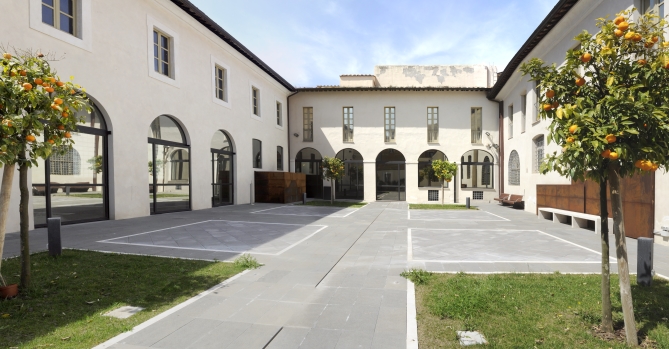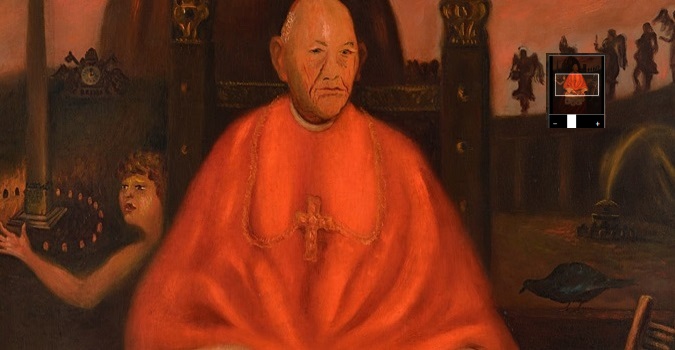The Collection
The collection of the Gallery of Modern Art is exposed in sequence and follows specific thematic paths linked to temporary exhibitions.
However, the following sculptural works are always on display, testifying to the varied path of Italian sculpture from the end of the 19th to the middle of the 20th century:
Girolamo Masini, Cleopatra, 1882;
AdolfoWildt, Maschera del dolore (Autoritratto), 1909;
Giovanni Prini, Gli amanti, 1909-1913;
Giovanni Prini, Le gemelle Azzariti, 1913;
Arturo Dazzi, Antonella, 1923;
Amleto Cataldi, Galatea, 1925;
Arturo Dazzi, Cavallino, 1927-1928;
Arturo Martini, Il pastore, 1930;
Marino Marini, Bagnante, 1934;
Dino Basaldella, Pescatore d'anguilla, 1934;
Attilio Torresini, Afrodite, 1930-1934;
Guido Galletti, Prometeo, 1935;
Ercole Drei, Il seminatore, 1937;
Italo Griselli, Romolo, 1937-1939;
Attilio Torresini, Riposo, 1938-1939;
Guido Galletti, Venere con i tre amorini, 1939;
Carlo Rivalta, Madre, 1939;
Tommaso Bertolino, Languore, 1939;
Giacomo Manzù, Bambina sulla sedia, 1955.
The collection of the Galleria d’Arte Moderna of Roma Capitale includes over three thousand works, such as paintings, sculptures, drawings, engravings, which bear witness of the history of collecting art and culture in Rome at the turn of the nineteenth century and throughout the first half of the twentieth century.
This meaningful and symbolic collection of works, real masterpieces of the twentieth century, come from additional and ongoing acquisitions by the City of Rome from the most important exhibitions in Italy and private donations. Notable artists, active in the nineteenth and twentieth centuries, featured in the collection are: Giulio Aristide Sartorio, Nino Costa, Onorato Carlandi, and in general the XXV painters of the “Campagna Romana” school, but also Adolfo De Carolis, Angelo Morbelli, Hirémy Adolf Hirschl; also noteworthy are sculptors such as Vincenzo Gemito and Ettore Ximenes. The twentieth century is represented by the works by Armando Spadini, Camillo Innocenti, Arturo Noci, Giacomo Balla, and by artists working in the 1930s such as Scipione, Mario Mafai, Giuseppe Capogrossi, Emanuele Cavalli, documenting that pivotal period known as Scuola Romana.
Alongside emblematic works such as Il Cardinal Decano (The Dean of the College of Cardinals, 1930) by Scipione, there are also numerous and important examples of the artistic trends and movements of the first half of the twentieth century, such as the Novecento Italiano, Magic Realism and the Second Futurism. From Francesco Trombadori to Giacomo Manzù, from Roberto Melli to Afro, from Franco Gentilini to Carlo Carrà, from Marino Marini to Giulio Turcato, from Benedetta to Enrico Prampolini, from Arturo Martini to Giorgio Morandi, Italian art is well documented and put in dialectical relationship with the European avant-garde.
In the 1990s, with the acquisition of Comizio by Giulio Turcato, dating between 1949 and 1950, the collection is further enriched by a work that marks, in the delicate balance between figuration and abstraction, the transition to contemporary languages.







































